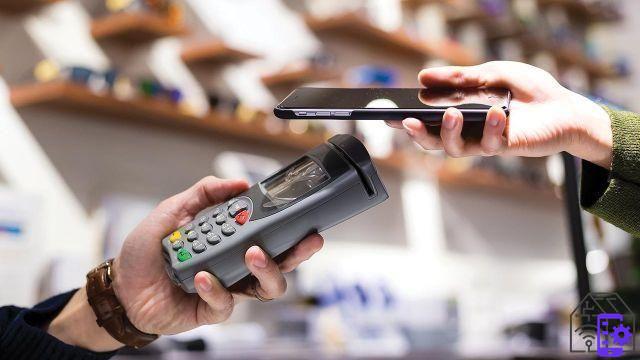
How has the payment method changed in history? What was there before cash, and - given what's happening today with cryptocurrencies and smartphones - what's next?
How the payment method has changed: before coins and banknotes
Paying means, at least for now, putting your hand to your wallet. And in many cases (at least in Italy, the third-last country in Europe in the use of credit cards) it is equivalent to the gesture of extracting banknotes and coins. This is the so-called cash, or liquid, universally accepted in a specific territory of reference, which is usually a state or a union of several states.
But that wasn't always the case. Let's find out how the payment method has changed in human history, and how it is (rapidly) changing in recent years.
The direct barter
The desire to possess what one does not have was born with man. When there was no money yet, the only payment method available seemed to be direct barter. That is, neither more nor less, the immediate exchange of one asset for another.
The ancient peoples, such as the Egyptians, the Cretans and the Greeks, therefore used goods rather than coins: the sales were ensured by the mutual exchange of livestock, wood, salt and various materials.
Everything worked if the agreements were satisfactory and the barter took place live. However, the problems started with the exchange on credit ("You give me X today, I will bring you Y tomorrow in return"). It is a practice based on trust, which requires consolidated relationships between different populations.
But how to guarantee payment on credit?

Mediated bartering and commodity money
Then the mediated barter is born, which replaces the direct one. And which sees the introduction of a third commodity as a guarantee, called commodity money. In the Western world, some specific metalworkings, including gold, become commodity coins. Here is the introduction of money, initially as a bridging value, to give the possibility of deferred exchanges: an indispensable practice when the sale was between products available at different times of the year.
The currency, the market, the exchange rates
Money appears for the first time in the eighth century BC in Lydia, region of Asia Minor. And shortly after the first coin, the elektron, entered the scene, the market was born.
The new figure of the merchant (the one, that is, who earns with sales) introduces the exchange rates between two goods: can decide to buy an asset by exchanging it for another asset (or money) and then resell it at a higher value.
How the payment method has changed: banknotes and banks
Banknotes originated in China at the beginning of the ninth century AD., but their wide diffusion in Europe will have to wait until the eighteenth century.
As for the banks, already in ancient times Babylonians and Greeks lent at interest the money that was accumulated in the temples thanks to the offerings of the faithful. But the first real banks flourished starting from the fifteenth century, especially between Genoa and Venice, and the next century is the turn of the first financial markets.
In the nineteenth century the concept of convertible money was introduced: in summary, money can have an intrinsic value lower than its exchange value, that is, the metal of which a coin is made (or the material of which a banknote is made) is worth less than the goods to which it is made to correspond.

Credit cards
1950 is a pivotal year, because it initiates the dematerialization of money.
That's when Diners Club International invents the first credit card: an anecdote has it that the idea came to Frank McNamara immediately after forgetting the money to pay the bill at the restaurant.
The first credit cards were not electronic but relied on manual devices that transferred the imprint of the card data onto paper vouchers.
In Italy the first cards of the BANCOMAT circuit spread in 1983, and between 1995 and 1996 PagoBANCOMAT was born.
Discount The rise and fall of money. A financial history of ...
The rise and fall of money. A financial history of ...
- Ferguson, Niall (Author)
The present (and beyond)
The more credit cards have evolved, the more they have eroded the leadership of cash. The advantages are well known: speed, attention to the environment, hygiene and above all greater traceability of operations.
Today we have arrived at fingerprint payments (by fingerprint) and contactless (by bringing the smartphone closer to the Pos). Not to mention cryptocurrencies: fashion of the moment or inevitable landing?
However, as is often the case when technology accelerates surprisingly, we are also seeing a curious return to different forms of barter, while revisited in a tech sauce. Leaving aside the administrative barter, introduced by law in Italy in 2014, just think of the exchange of apartments, or the apps that allow you to exchange objects without resorting to money.
We look forward to a future in which the waiter at the corner bar will chat with the customer sitting a few meters from him, to decide how many unfiltered Marlboros a martini cocktail will be worth.




















![[Review] Samsung Powerbot VR7000: the robot vacuum cleaner from Star Wars](/images/posts/6bc44de38605b5c0fa12661febb1f8af-0.jpg)





